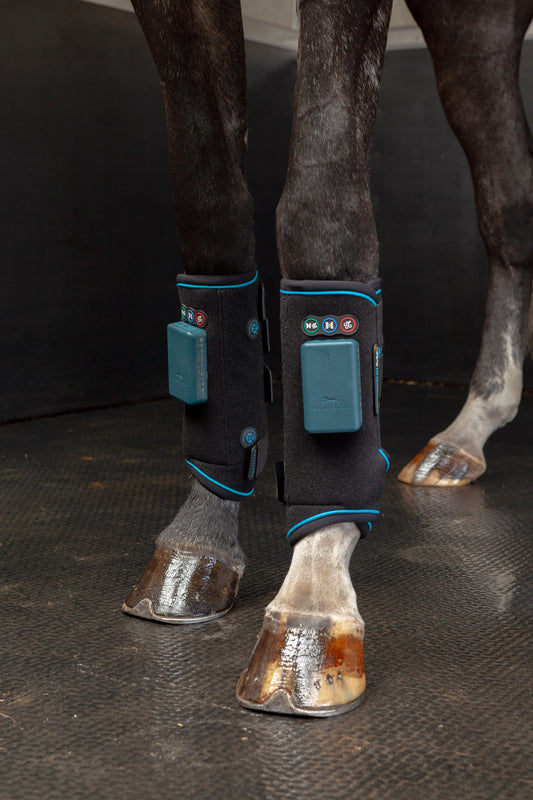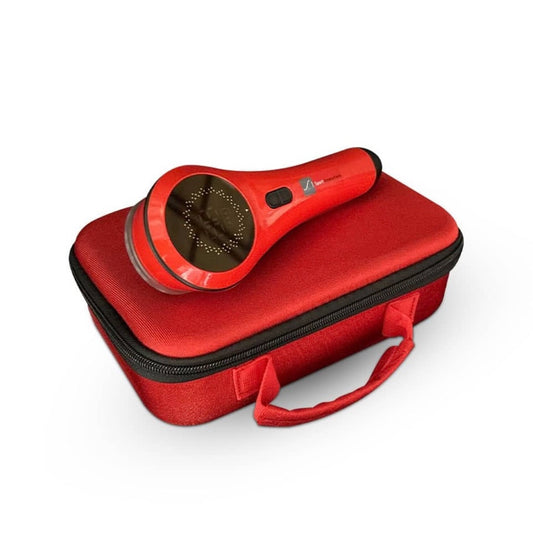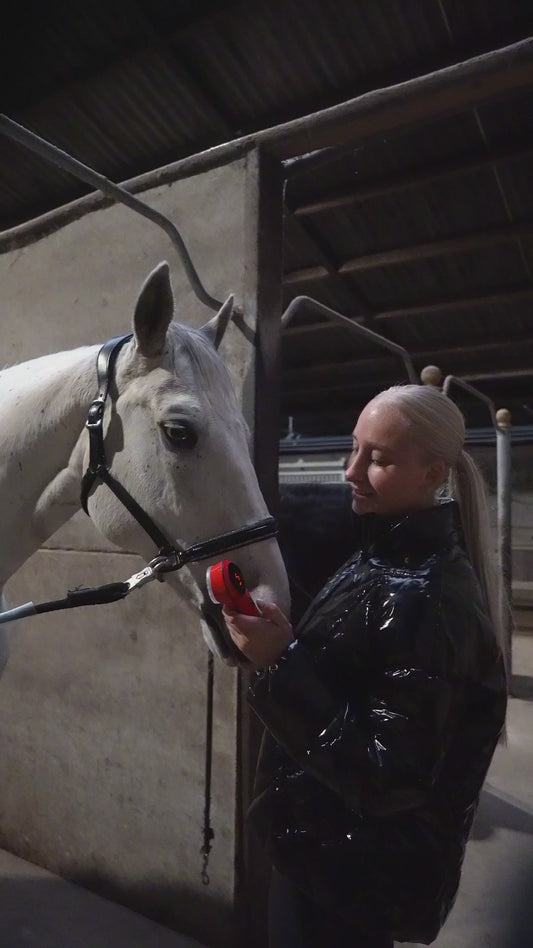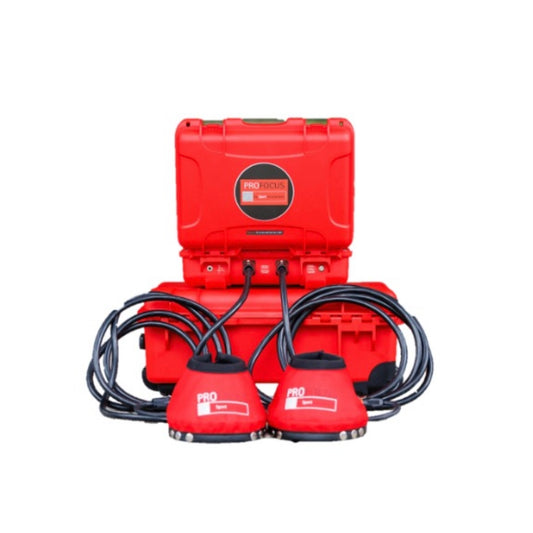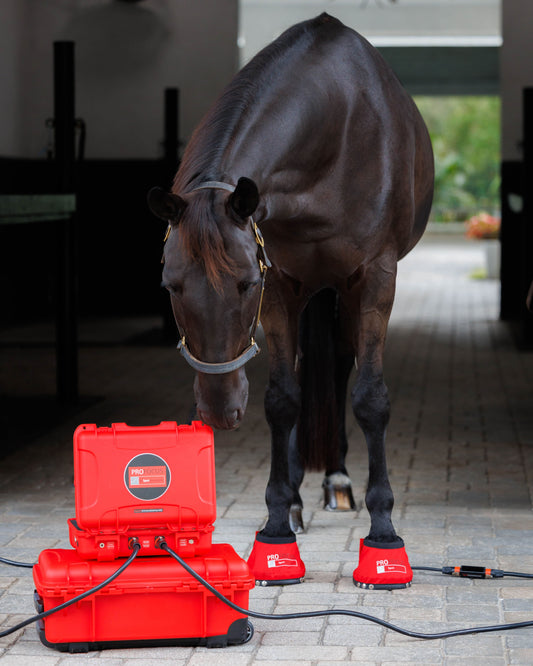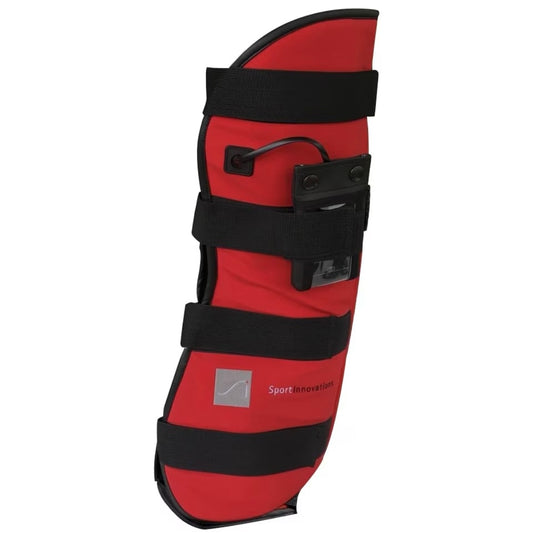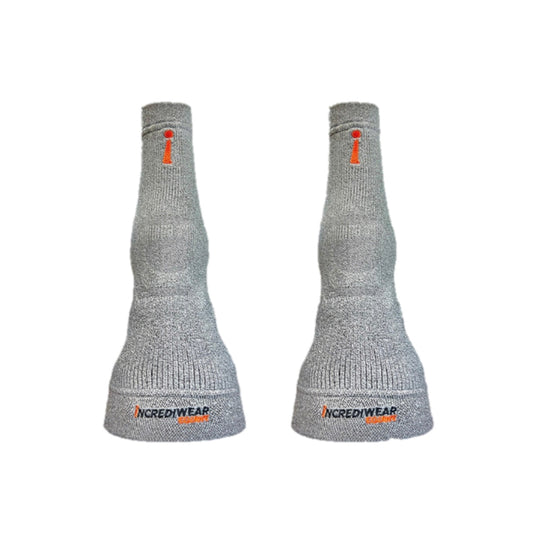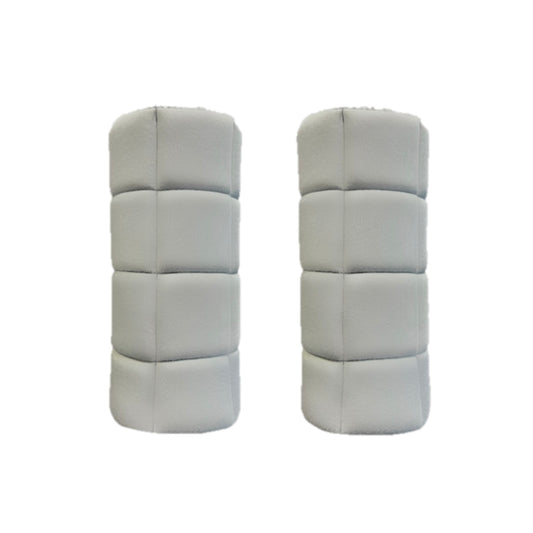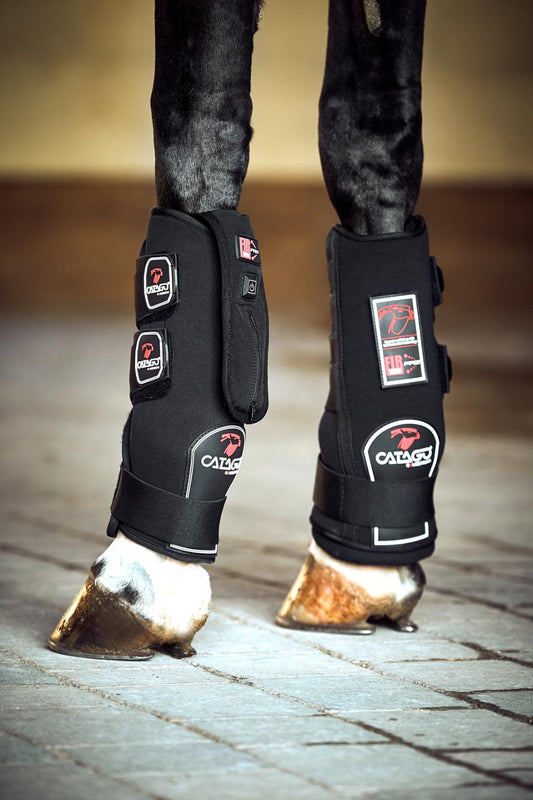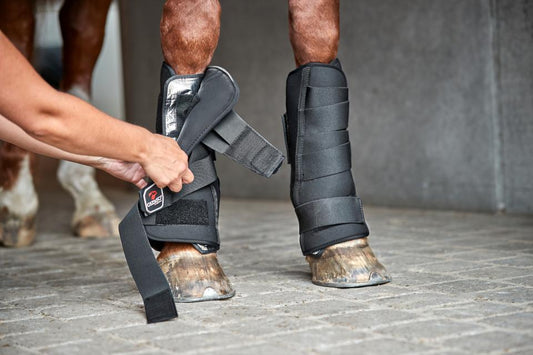Tendon Injuries
Tendon Strain
General Information
Tendon strain is a common injury in horses, particularly those involved in performance or intense physical activity. Tendons are fibrous connective tissues that attach muscles to bones, playing a crucial role in movement and load-bearing.
- Most Affected Tendons:
The severity of tendon strain ranges from minor inflammation to partial or complete tendon rupture. Early diagnosis and appropriate treatment are essential for recovery and return to activity.
How to Recognize Tendon Strain
Signs of tendon strain can vary by severity, but common indicators include:
- Heat and Swelling: Localized heat and swelling in the affected area.
- Pain on Palpation: Tenderness when pressing on the tendon.
- Lameness: Ranges from mild to severe, often worse after exercise.
- Altered Tendon Shape: Thickening or irregularities in the tendon’s contour in severe cases.
- Reluctance to Bear Weight: Avoiding weight-bearing on the affected limb.
If these signs are observed, consult a veterinarian immediately for an accurate diagnosis.
Causes of Tendon Strain
Several factors contribute to tendon strain:
- Overuse or Overexertion: Repetitive motion or intense activity, especially in performance horses.
- Poor Conformation: Structural abnormalities that increase tendon strain.
- Uneven Ground: Slips or shifts on uneven surfaces causing acute strain.
- Inadequate Conditioning: Insufficient preparation before intense activity.
- Improper Shoeing: Imbalanced hoof trimming or shoeing affecting biomechanics.
- Aging: Decreased tendon elasticity and strength with age.
How to Prevent Tendon Strain
Prevention involves proper management and conditioning:
- Gradual Training: Progressively increase workloads to strengthen tendons.
- Warm-Up and Cool-Down: Ensure thorough warm-ups and cool-downs to reduce strain.
- Surface Awareness: Use safe, well-maintained training and competition surfaces.
- Hoof Care: Maintain regular and balanced hoof trimming and shoeing.
- Fitness Maintenance: Keep your horse fit and at an appropriate weight.
- Monitor Workloads: Avoid overtraining and repetitive strain.
What to Do if Your Horse Has Tendon Strain
Immediate Steps:
- Stop Exercise: Cease all activity to prevent further damage.
- Apply Cold Therapy: Use cold packs or wraps within the first 24-48 hours to reduce inflammation.
- Compression: Lightly wrap the limb to manage swelling (avoid excessive tightness).
- Restrict Movement: Limit activity through box rest or controlled movement.
- Consult a Veterinarian: Obtain an ultrasound to assess the injury and develop a treatment plan.
Treatment Options:
- Minor strains may require a few weeks of rest and anti-inflammatory treatments.
- Severe cases may need prolonged rest, rehabilitation, or surgical intervention.
Therapies to Aid Recovery
Advanced therapies can enhance healing and tendon quality during recovery:
- Cooling Therapy:
- PEMF Therapy (Pulsed Electromagnetic Field):
- Infrared Therapy:
- LED Therapy:
- NMES Therapy (Neuromuscular Electrical Stimulation):
- Vibration Therapy:
Conclusion
Tendon strain is a serious condition that requires prompt attention and diligent care. Preventative measures, early diagnosis, and advanced therapies can greatly improve outcomes. If you suspect tendon strain, consult your veterinarian for a tailored recovery plan and consider integrating advanced therapeutic tools to optimize healing.
Tendon Rupture
General Information
Tendon rupture is a severe and often career-ending injury in horses, involving a complete tear of the tendon fibers. This leads to significant loss of function and requires immediate and intensive care.
- Commonly Affected Tendons:
Key Differences from Tendon Strain:
- A rupture involves a full-thickness tear, compared to partial damage in strains.
- It results in catastrophic loss of limb function.
Cause: Excessive mechanical stress, often with pre-existing degenerative changes in the tendon. Without timely intervention, it can lead to chronic lameness or permanent unsoundness.
How to Recognize Tendon Rupture
Signs of tendon rupture include:
- Severe Lameness: Immediate and often non-weight-bearing on the affected limb.
- Visible Deformity: Sunken or irregular tendon shape.
- Swelling and Heat: Pronounced swelling in the injured area.
- Dropped Fetlock: In cases of flexor tendon rupture, the fetlock may sink abnormally close to the ground.
- Pain Response: Extreme pain on palpation or limb manipulation.
Diagnosis: Ultrasound imaging is essential to confirm the extent of the rupture and guide treatment.
Causes of Tendon Rupture
Tendon ruptures can result from:
- Acute Trauma: Sudden extreme force, such as a slip or fall.
- Pre-existing Degeneration: Chronic microdamage or age-related weakening of the tendon.
- Overuse Injuries: Repeated stress from intense training or competition.
- Improper Hoof Care: Imbalances in trimming or shoeing that alter biomechanics.
- Poor Ground Conditions: Slippery, uneven, or hard surfaces that increase strain.
- Underlying Conditions: Issues like tendonitis or suspensory desmitis can predispose the tendon to rupture.
How to Prevent Tendon Rupture
Prevention strategies include:
- Gradual Training Programs: Strengthen tendons progressively to avoid overloading.
- Warm-Up and Cool-Down: Prevent sudden stress on tendons by ensuring proper preparation and recovery.
- Surface Awareness: Train on consistent, well-maintained ground to reduce risks.
- Hoof and Limb Care: Regular trimming and shoeing to maintain alignment and balance.
- Avoid Overtraining: Incorporate rest days for recovery and adaptation.
- Veterinary Assessments: Early detection of tendon issues through routine checks.
What to Do If Your Horse Has Tendon Rupture
Immediate Steps:
- Stop All Activity: Avoid further stress on the limb.
- Stabilize the Limb: Apply a supportive bandage or splint.
- Cooling Therapy: Use cold packs within 24-48 hours to control inflammation.
- Restrict Movement: Keep the horse on box rest to prevent further damage.
- Seek Veterinary Attention: Obtain emergency imaging (ultrasound or MRI) for diagnosis and treatment planning.
Veterinary Management:
- Surgical Repair: For severe cases, surgery may be required to reattach or stabilize the tendon.
- Anti-inflammatory Medications: To control pain and swelling.
- Immobilization: Casts or specialized splints to protect the repair.
- Long-Term Rest and Rehabilitation: Recovery may take several months to over a year, depending on the severity.
Therapies to Aid Recovery
Advanced therapies can enhance the quality and strength of the repaired tendon:
- Cooling Therapy:
- PEMF Therapy (Pulsed Electromagnetic Field):
- Infrared Therapy:
- LED Therapy:
- NMES Therapy (Neuromuscular Electrical Stimulation):
- Vibration Therapy:
Conclusion
Tendon rupture is a life-altering injury that demands immediate and specialized care. Recognizing the signs early, implementing advanced therapies, and following a structured rehabilitation program can significantly improve outcomes. Prevention through proper training, conditioning, and care is the best way to avoid such catastrophic injuries.
Superficial Digital Flexor Tendon Injury
The superficial digital flexor tendon (SDFT) is critical for movement and weight-bearing in horses, especially in athletic disciplines. This tendon’s essential role makes it prone to injury, particularly under mechanical stress. Early recognition, proper management, and advanced therapies are crucial for recovery.
General Information
- Location and Function:
The SDFT runs down the back of the cannon bone, connecting the muscles in the forelimb or hindlimb to the bones of the lower limb. It supports weight during movement and absorbs shock during high-impact activities like jumping, racing, and galloping. - Types of Injuries:
Injuries to the SDFT range from mild strains to partial or full-thickness tears. - Risk in Performance Horses:
Due to its function and location, the SDFT is highly susceptible to mechanical stress, particularly in athletic horses. Injuries often require extended rest and rehabilitation.
How to Recognize an SDFT Injury
Signs of Injury:
- Heat and Swelling: Noticeable swelling or “bowing” in the tendon area, often warm to the touch.
- Pain on Palpation: Flinching or discomfort when the tendon is pressed.
- Lameness: Varies in severity depending on the extent of the injury.
- Altered Tendon Shape: Thickened or irregular contour in chronic cases.
- Reluctance to Work: Horses may refuse tasks involving heavy weight-bearing or high impact.
Diagnosis:
Ultrasound imaging is the gold standard for assessing damage and monitoring recovery.
Causes of SDFT Injury
Contributing Factors:
- Overexertion: Repetitive strain from high-performance activities (e.g., jumping, racing, eventing).
- Poor Conditioning: Inadequately prepared tendons are more prone to stress-related injuries.
- Age-Related Degeneration: Aging reduces tendon elasticity and strength.
- Improper Ground Conditions: Uneven, slippery, or hard surfaces increase injury risk.
- Conformation Defects: Poor limb conformation leads to uneven stress distribution.
- Shoeing Imbalances: Incorrect trimming or shoeing alters biomechanics and strains the tendon.
How to Prevent SDFT Injury
Strategies for Prevention:
- Gradual Fitness Programs: Strengthen tendons progressively through controlled training.
- Warm-Up and Cool-Down: Prepares tendons for activity and aids post-exercise recovery.
- Monitor Training Surfaces: Use even, shock-absorbing ground to minimize impact forces.
- Hoof Care: Regular trimming and shoeing to maintain proper alignment.
- Appropriate Workload: Avoid overtraining and repetitive tendon stress.
- Early Detection: Routine veterinary checks can identify early signs of stress or degeneration.
What to Do If Your Horse Has an SDFT Injury
Immediate Steps:
- Stop Exercise: Avoid further stress on the tendon.
- Apply Cold Therapy: Use ice packs or cold water hosing for 20-30 minutes every 2-4 hours in the first 48 hours.
- Compression Bandaging: Apply a supportive wrap to control swelling.
- Box Rest: Restrict movement to allow healing, particularly in the acute phase.
- Veterinary Assessment: Obtain an ultrasound evaluation to confirm the injury and plan treatment.
Veterinary Management:
- Minor Injuries: Rest and gradual return to work over a few months.
- Severe Injuries: Rest and rehabilitation for 6-12 months, guided by veterinary advice.
- Medications: Anti-inflammatory drugs may help manage pain and swelling.
Therapies to Aid Recovery
Advanced therapies enhance the quality and speed of tendon healing:
- Cooling Therapy:
- PEMF Therapy (Pulsed Electromagnetic Field):
- Infrared Therapy:
- LED Therapy:
- NMES Therapy (Neuromuscular Electrical Stimulation):
- Vibration Therapy:
Conclusion
SDFT injuries are serious conditions requiring immediate attention and long-term care. With proper management—including rest, rehabilitation, and advanced therapies—many horses can recover and return to activity. Prevention through structured training, surface management, and regular veterinary care is essential in minimizing the risk of SDFT injuries.
For optimal recovery, consult your veterinarian promptly and consider integrating advanced therapeutic products into the rehabilitation plan.
Deep Digital Flexor Tendon Injury
The Deep Digital Flexor Tendon (DDFT) is a vital structure in the equine limb, essential for movement and weight-bearing. Injuries to the DDFT can significantly affect a horse's performance and quality of life. Early detection, careful management, and advanced therapies are crucial for optimal recovery.
General Information
- Location and Function:
The DDFT originates in the leg, passes through the carpal canal, over the fetlock joint, and inserts on the coffin bone. Its primary roles include flexing the lower leg joints and stabilizing the limb during movement. - Injury-Prone Areas:
Due to its location, the DDFT endures immense mechanical forces, particularly in performance horses.
How to Recognize a DDFT Injury
Common Signs:
- Lameness: Ranges from mild to severe and often worsens with exercise.
- Heat and Swelling: Localized in the tendon sheath or affected area.
- Pain on Palpation: Notable discomfort when pressing along the tendon.
- Effusion (Fluid Swelling): Particularly evident in the tendon sheath in cases involving sheath injuries.
- Stumbling or Toe Dragging: Results from impaired tendon function.
Diagnosis:
Advanced imaging, such as ultrasound or MRI, is essential to pinpoint the damage's location and extent.
Causes of DDFT Injury
Factors Contributing to DDFT Injuries:
- Overuse or Overloading: Repetitive strain in performance horses.
- Trauma: Direct impact or overextension of the limb.
- Degenerative Changes: Tendon wear due to aging or chronic stress.
- Improper Hoof Care: Long toes or incorrect trimming/shoeing increase tendon strain.
- Navicular Syndrome: Often linked to damage as the tendon passes over the navicular bone.
- Poor Ground Conditions: Hard, uneven, or slippery surfaces heighten the risk of injury.
How to Prevent DDFT Injuries
Preventative Measures:
- Proper Conditioning: Gradually strengthen tendons through progressive training.
- Regular Farriery: Maintain balanced hooves and correct angles to optimize limb mechanics.
- Surface Management: Ensure training and competition on consistent, well-maintained footing.
- Monitoring Workload: Alternate intense sessions with rest or lighter work to avoid overtraining.
- Warm-Up and Cool-Down: Essential to prepare tendons for activity and aid recovery.
- Routine Veterinary Checks: Early detection of stress or subtle lameness can prevent further injury.
What to Do If Your Horse Has a DDFT Injury
Immediate Steps:
- Stop Exercise: Prevent further tendon damage by ceasing activity.
- Apply Cooling Therapy: Use ice packs or cold hosing for 20-30 minutes every 2-4 hours during the first 48 hours to reduce inflammation.
- Restrict Movement: Strict box rest minimizes tendon strain in the acute phase.
- Contact Your Veterinarian: Imaging and veterinary assessment are critical for diagnosis and treatment planning.
Veterinary Management:
- Anti-Inflammatory Treatment: NSAIDs help manage pain and inflammation.
- Tendon Sheath Lavage: Alleviates pressure and removes inflammatory mediators if fluid buildup is present.
- Controlled Exercise Program: Gradual reintroduction of exercise under veterinary supervision.
Therapies to Aid Recovery
Advanced therapies can improve tendon repair and reduce recovery time:
- Cooling Therapy:
- PEMF Therapy (Pulsed Electromagnetic Field):
- Infrared Therapy:
- LED Therapy:
- NMES Therapy (Neuromuscular Electrical Stimulation):
- Vibration Therapy:
Conclusion
DDFT injuries are complex and demand a comprehensive approach to management and rehabilitation. With prompt care, advanced therapies, and a structured recovery plan, many horses can regain functionality and even return to their previous activity levels.
Preventative measures, such as proper training, hoof care, and regular monitoring, are key to reducing the risk of these injuries. If your horse has a DDFT injury, consult your veterinarian promptly and consider incorporating advanced therapeutic products into their recovery plan.


